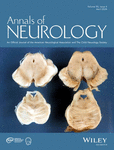
Citation :
Wiesman, A. I., da Silva Castanheira, J., Fon, E. A., Baillet, S., PREVENT‐AD Research Group, & Quebec Parkinson Network (2024). Alterations of Cortical Structure and Neurophysiology in Parkinson’s Disease Are Aligned with Neurochemical Systems. Annals of neurology, 95(4), 802–816. https://doi.org/10.1002/ana.26871
Full text : Here
Wiesman A, da Silva Castanheira J, Fon EA, Baillet S, PREVENT‐AD Research Group& Quebec Parkinson Network
published in Annals of Neurology, April 2024.
ABSTRACT :
Objective: Parkinson’s disease (PD) affects the structural integrity and neurophysiological signaling of the cortex. These alterations are related to the motor and cognitive symptoms of the disease. How these changes are related to the neurochemical systems of the cortex is unknown.
Methods: We used T1-weighted magnetic resonance imaging (MRI) and magnetoencephalography (MEG) to measure cortical thickness and task-free neurophysiological activity in patients with idiopathic PD (nMEG = 79, nMRI = 65) and matched healthy controls (nMEG = 65, nMRI = 37). Using linear mixed-effects models, we examined the topographical alignment of cortical structural and neurophysiological alterations in PD with cortical atlases of 19 neurotransmitter receptor and transporter densities.
Results: We found that neurophysiological alterations in PD occur primarily in brain regions rich in acetylcholinergic, serotonergic, and glutamatergic systems, with protective implications for cognitive and psychiatric symptoms. In contrast, cortical thinning occurs preferentially in regions rich in noradrenergic systems, and the strength of this alignment relates to motor deficits.
Interpretation: This study shows that the spatial organization of neurophysiological and structural alterations in PD is relevant for nonmotor and motor impairments. The data also advance the identification of the neurochemical systems implicated. The approach uses novel nested atlas modeling methodology that is transferrable to research in other neurological and neuropsychiatric diseases and syndromes.
